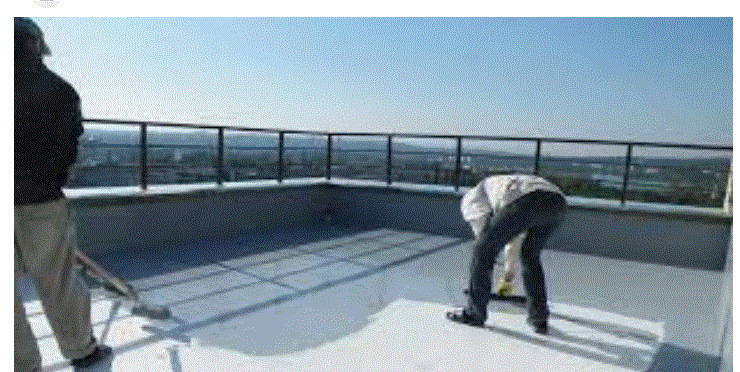Water Proofing is a critical aspect of construction, renovation, and maintenance projects. Whether you’re building a new structure or refurbishing an existing one, selecting the right materials for waterproofing is essential to ensure longevity, structural integrity, and protection against moisture-related damage. In this comprehensive guide, we’ll explore the best materials for waterproofing, their properties, applications, and considerations to help you make informed decisions for your project.
Introduction to Waterproofing Materials
Waterproofing materials are designed to prevent the penetration of water and moisture into structures, thereby safeguarding them from damage caused by leaks, dampness, and mold. These materials vary widely in composition, properties, and application methods, allowing for versatility in addressing different Polyaspartic Coating needs.
Types of Waterproofing Materials
a. Bituminous Membranes: Bituminous membranes, made from bitumen and a variety of additives, are commonly used for waterproofing roofs, basements, and foundations. These membranes are durable, flexible, and resistant to UV rays, making them suitable for outdoor applications.
b. Liquid Membranes: Liquid waterproofing membranes, often composed of polymers like acrylics, polyurethanes, or silicones, are applied as coatings over surfaces to create a seamless barrier against water intrusion. They are ideal for irregularly shaped structures and can be easily applied with a brush, roller, or spray.
c. Cementitious Waterproofing: Cementitious waterproofing compounds are cement-based mixtures that form a rigid barrier when applied to concrete surfaces. They are commonly used for waterproofing basements, swimming pools, and water tanks due to their affordability and ease of application.
d. Polyurethane Membranes: Polyurethane membranes offer excellent flexibility and adhesion, making them suitable for both horizontal and vertical waterproofing applications. They are often used in areas prone to movement, such as bridge decks and balconies.
e. EPDM Rubber Membranes: Ethylene Propylene Diene Monomer (EPDM) rubber membranes are highly durable and resistant to weathering, making them ideal for flat roof waterproofing. They are available in large sheets that can be easily installed with adhesives or mechanical fasteners.
Factors to Consider When Choosing Waterproofing Materials
a. Environmental Conditions: Consider the climate, temperature fluctuations, and exposure to sunlight when selecting waterproofing materials. Some materials may degrade over time when exposed to extreme weather conditions.
b. Substrate Compatibility: Ensure compatibility between the waterproofing material and the substrate to which it will be applied. Proper surface preparation is essential to achieve adhesion and long-term performance.
c. Application Method: Evaluate the ease of application and the required skill level for installing the chosen waterproofing material. Some products may require specialized equipment or professional installation.
d. Durability and Longevity: Assess the expected lifespan and maintenance requirements of the waterproofing material. Investing in high-quality materials upfront can save costs on repairs and replacements in the long run.
e. Cost-effectiveness: Compare the initial cost, lifespan, and performance of different waterproofing materials to determine the most cost-effective solution for your project.
Additional Waterproofing Materials and Techniques
a. Sheet Membranes: Sheet membranes, typically made of materials like PVC, TPO, or HDPE, offer a highly effective waterproofing solution for roofs, decks, and below-grade applications. These pre-formed sheets provide a seamless barrier against water intrusion and are often preferred for their ease of installation and durability.
b. Bentonite Waterproofing: Bentonite, a naturally occurring clay material, can be used as a waterproofing membrane or as part of a composite waterproofing system. When hydrated, bentonite forms a swelling gel that effectively seals cracks and voids in concrete structures, providing reliable waterproofing protection.
c. Sprayed Polyurea Coatings: Polyurea coatings offer rapid curing times and excellent chemical resistance, making them suitable for waterproofing applications in harsh environments such as chemical containment areas, wastewater treatment facilities, and industrial flooring.
d. Hydrophilic Waterstops: Hydrophilic waterstops are strips or seals made from materials that swell when exposed to water, effectively sealing joints and penetrations in concrete structures. These waterstops are commonly used in below-grade construction to prevent water ingress through expansion joints and construction joints.
e. Crystalline Waterproofing: Crystalline waterproofing products consist of chemicals that react with moisture in concrete to form insoluble crystals, which block the passage of water through capillary pores and micro-cracks. This self-sealing mechanism provides long-lasting waterproofing protection for concrete structures without the need for additional membranes or coatings.
Emerging Trends in Waterproofing Technology
a. Green Roof Systems: Green roofs, which incorporate vegetation and growing medium into the roof structure, offer natural waterproofing benefits by reducing stormwater runoff, regulating temperature fluctuations, and protecting roofing membranes from UV degradation.
b. Nanotechnology-Based Waterproofing: Nanotechnology is being increasingly utilized in waterproofing materials to enhance their performance through the use of nano-sized particles and additives. Nanocoatings can provide superior water repellency, UV resistance, and durability compared to traditional waterproofing products.
c. Smart Waterproofing Systems: Advances in sensor technology and data analytics have enabled the development of smart waterproofing systems that can monitor moisture levels, detect leaks, and provide real-time alerts to building owners and maintenance personnel, allowing for proactive maintenance and early intervention.
d. Recycled and Sustainable Materials: With growing concerns about environmental sustainability, there is a rising demand for waterproofing materials made from recycled or renewable sources, such as recycled plastics, bio-based polymers, and natural fibers. These eco-friendly alternatives offer comparable performance to traditional materials while reducing the environmental impact of construction projects.
e. Integrated Waterproofing Solutions: Integrated waterproofing systems, which combine multiple waterproofing components such as membranes, drainage layers, and protection boards into a cohesive system, are gaining popularity for their ability to provide comprehensive waterproofing solutions tailored to specific project requirements.
Conclusion
Selecting the best materials for waterproofing is crucial for protecting structures from water damage and ensuring their long-term durability. By considering factors such as environmental conditions, substrate compatibility, application method, durability, and cost-effectiveness, you can make informed decisions that meet the specific needs of your project. Whether you opt for bituminous membranes, liquid coatings, cementitious compounds, polyurethane membranes, or EPDM rubber, investing in quality waterproofing materials will provide peace of mind and safeguard your investment for years to come.

